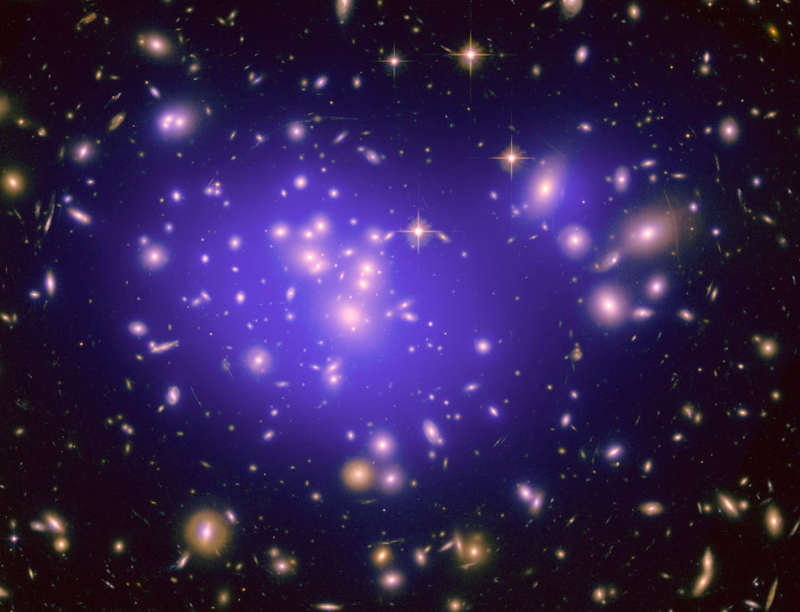Credit & Copyright: NASA,
ESA,
E. Jullo
(JPL), P. Natarajan
(Yale), & J.-P. Kneib
(LAM,
CNRS)
Acknowledgment: H. Ford and N. Benetiz (JHU), & T. Broadhurst (Tel Aviv)
Explanation:
What's the matter with this cluster of galaxies?
To find out what forms matter takes in the
Abell 1689 cluster requires not only deep images from
telescopes like the
Hubble Space Telescope, but detailed
computer modeling
as well.
To start, almost every fuzzy yellow patch in the
above image is an entire galaxy.
A close inspection, however, shows that many background galaxies are strangely magnified
and distorted into
long curving arcs by the
gravitational lens deflections of the cluster.
Computer analyses of the
placement and smoothness
of these arcs indicate that in addition to the matter in the galaxies you can see,
the cluster must also contain a significant amount of
dark matter such as the model digitally superposed in
purple.
Now Abell 1689 remains enigmatic
because the arcs are so numerous and diverse that no single
dark matter model has emerged that can
explain them all and still remain consistent with dark matter models needed
to constrain their motion.
Still, the detailed information available from
clusters of galaxies like Abell 1689 gives
hope that one day full solutions will be found that will not only fully reveal the
dark matter in clusters,
but also reveal the amounts of
dark energy
in the
universe
needed to lie along the line of sight to the
distant arcs.
Acknowledgment: H. Ford and N. Benetiz (JHU), & T. Broadhurst (Tel Aviv)
Authors & editors:
Robert Nemiroff
(MTU) &
Jerry Bonnell
(USRA)
NASA Web Site Statements, Warnings,
and Disclaimers
NASA Official: Jay Norris.
Specific
rights apply.
A service of:
LHEA at
NASA /
GSFC
& Michigan Tech. U.
Based on Astronomy Picture
Of the Day
